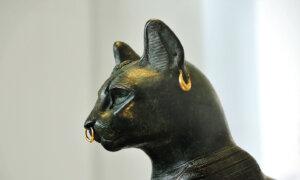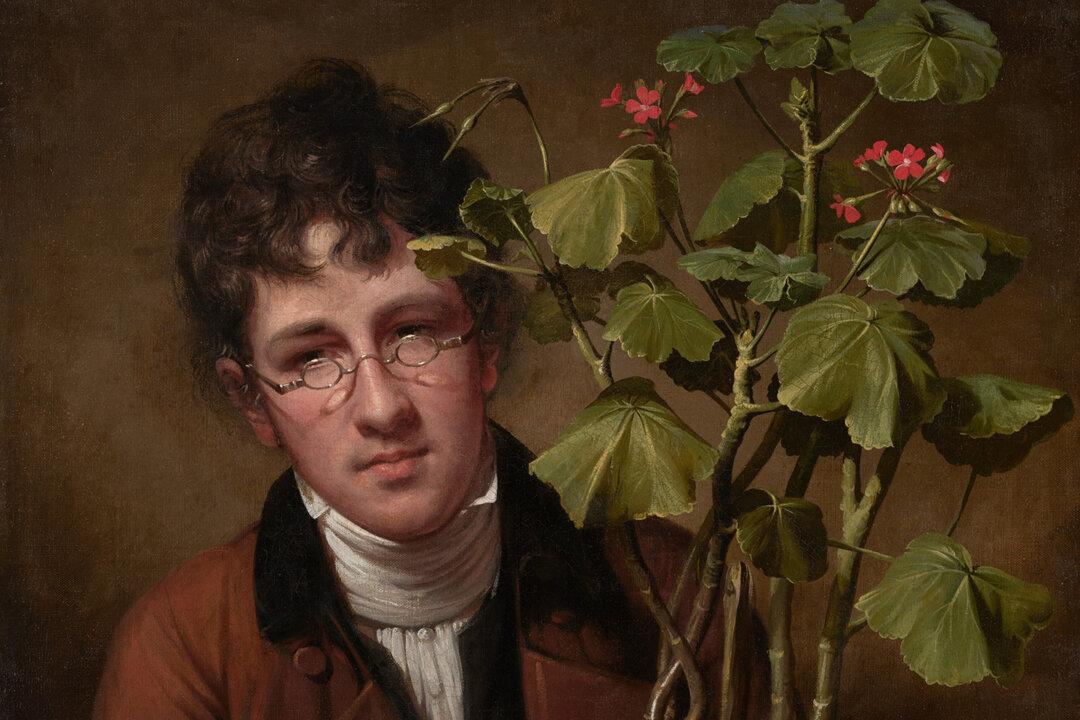The ancient Egyptian Queen Nefertiti is a world-famous beauty, a style icon, and a timeless pop culture sensation. Her life fascinates the general public and confounds experienced scholars.
Nefertiti’s international celebrity in the modern era dates to the first part of the 20th century, with the discovery and display of a piece of artwork—the Nefertiti bust, from circa 1351 to 1334 B.C. The tale of this limestone and stucco statue complements its sitter’s epic story.
Nefertiti, whose name means “the Beautiful One Is Here” in the Egyptian language, was the chief wife of Pharaoh Amenhotep IV. She was born into a non-royal family circa 1370 B.C. The lack of clarity about her parentage and birth year set the stage for a life that has remained enigmatic.
The Royal Couple and Aten

Married as teenagers, Nefertiti and her husband were the Egyptian power couple of the 14th century B.C. They had six daughters together. One went on to marry the infamous Tutankhamun, who may have been the son of Amenhotep and a different wife. Amenhotep was a reforming leader, and Nefertiti was his integral partner. He moved the royal court from Thebes to an area named Akhetaten, meaning “Horizon of the Aten,” near the present-day city of Amarna, Egypt. Furthermore, he established a new religion that replaced the polytheistic Egyptian deities with worship of Aten, the sun disk. This was perhaps an early form of monotheism, but assigning this definition is challenged by some in the field. The pharaoh changed his name to Akhenaten, which translates as “pleasing to Aten.”
Part of the collection of Berlin’s Neues Museum is the limestone house altar featuring Akhenaten, Nefertiti and three of their daughters under the solar Aten. It dates likely to just after the royal court’s move to its new city. It illustrates Nefertiti’s power. She is depicted equal to her husband in several ways: Her figure’s scale is the same as Akhenaten’s; her name is of the same standing as his in the royal cartouche; and the sun god’s rays extend the ankh symbol of “life” in front of both of their noses.
In the new religion, the royal couple and Aten form a divine trinity. There are political symbols in this family altar, too. Nefertiti’s chair is decorated with a knot that binds together images of the papyrus and lotus. This symbolizes the historic unification of Upper and Lower Egypt.
The children’s heads are shown elongated to signify the life-giving power of the solar disk. Indeed, the Amarna art style is quite different from the status quo ancient Egyptian art marked by static and formal representations. Amarna art is characterized by elongated figures, including necks and high cheekbones, and incorporates elements of naturalism and dynamism. In addition, it is known for its portrayal of affectionate familial relationships, ranging from Akhenaten and Nefertiti holding hands to the queen tenderly embracing her children, such as in the intimate fragment “Nefertiti and Her Daughter” at the Brooklyn Museum.

This piece is also representative of how Akhenaten’s reforms were unpopular. The pharaoh and his principal wife were “erased” by subsequent rulers after his death who reinstated the formerly upended traditions and abandoned the city of Akhetaten. This relief reflects deliberate damage done to Nefertiti’s face and inscriptions.

The dynamic between the couple have also come under scrutiny. Sometime after the 12th year of Akhenaten’s tenure, Nefertiti’s name disappeared from the record. Longstanding theories range from her death to her disfavor for only producing daughters or renouncing Atenism. However, in early 2012, a rockface with an inscription dating to the 16th year of Akhenaten’s reign was found north of Amarna. It includes Nefertiti’s name and refers to her as the Great Royal Wife.
Borchardt’s Team ‘Strikes Gold’

In 1907, German Egyptologist and architectural historian Ludwig Borchardt made a proposal to the German Oriental Society for extended excavations at the ancient city of Akhetaten, called Tell el-Amarna in Arabic. The long-term project was greenlit and solely funded by the Society’s founder, the Berliner James Simon, who was a wealthy Jewish businessman and arts patron.
The Egyptian Council of Antiquities granted an excavation license to Borchardt and his team, and they began their work in the winter of 1911 to 1912. Initial finds included residential houses, villas, and other complexes. Every area was numbered and every find was documented in sketches and a diary. The greatest treasures were found in “P 47.2.”
On Dec. 5, 1912, it became clear that “P 47.2” was likely an artist’s workshop and was determined to be that of the sculptor Thutmose. The following day, the team “struck gold.” They uncovered a remarkably lifelike, colorful, and well-preserved bust of Nefertiti. Ludwig Borchardt’s famous excavation diary entry states evocatively, “Colours as if paint was just applied. Work absolutely exceptional. Description is useless, must be seen.”

Thutmose’s workshop was a font of incredible art. In the same room as Nefertiti’s sculpture was a bust of Akhenaten. Unfortunately, this life-size colored sculpture was not in as good condition as its counterpart. The pharaoh’s face had been smashed purposefully. Its original state would have been majestic, and traces of paint and gilding are still visible.
Busts are found throughout much of the classical world, but are rare in Egyptian art, which preferred the depiction of figures in full. It is possible that both busts would have been used in a temple or palace setting for veneration of the couple.
The third major find was “Stele of Akhenaten and his family.” Toward the end of the expedition, the required division of finds took place between the German team and the Egyptians. Egypt requested the stele, which is now in Cairo’s Egyptian Museum. The Germans were allowed to export both busts of the royal couple along with other finds.

A Pop Culture Phenomenon

For the past 16 years, the vivacious bust of Nefertiti has been dramatically displayed in its own gallery, the North Dome Room, at the Neues Museum. At 19 inches tall, it weighs approximately 44 pounds. It first went on public view in 1924 and immediately caused a sensation. Visitors from near and far were awestruck by the bust’s aesthetics: symmetrical beauty with swanlike neck and high cheekbones, confident gaze, and realistic details, such as delicate neck muscles. This image of Nefertiti quickly became iconic, comparable to Leonardo’s “Mona Lisa.” It was featured in all manner of media, including beauty columns, fashion designs, advertisements, and even a Mickey Mouse comic.
One of the bust’s greatest style influences was its kohl rimmed almond-shaped eyes. Women have imitated the cat-eye makeup look since the bust’s museum debut. In “Eyeliner: A Cultural History” by Zahra Hankir, the author writes,
“All features considered, the allure of the queen’s eyes—framed with thick black lines—is unparalleled. The lines are perfectly symmetrical, meeting at the edges of the eyes to form her trademark flicks. From a strictly aesthetic perspective, the tracing defines and widens the windows into Nefertiti’s soul, lending them a fresh-looking yet sultry appearance.”

Fashions mimicking the bust’s wide collar and hats and hairstyles resembling her flat-topped crown have also been popular in the 20th and 21st centuries.
The iris and pupil of the extant right eye consist of beeswax dyed black covered with a slender bit of polished rock crystal as the cornea. The left eye is missing a corresponding inlay. Borchardt and his team found no sign of it, though they carried out an in-depth search, and the bust’s socket itself does not show any trace of having once had one. That begs the question of why. No answer has produced a consensus among experts.
The Berlin State Museums expounds upon the importance of Nefertiti bust, writing:
“The sheer variety of appropriations of the image and the transformation of the bust from an archaeological artefact to a phenomenon of pop culture attest to its universal significance. Independently of all these uses, the bust of Nefertiti speaks for itself. It truly is part of our world heritage.”
Miraculously, it has survived the sands of time to stand the test of time.







